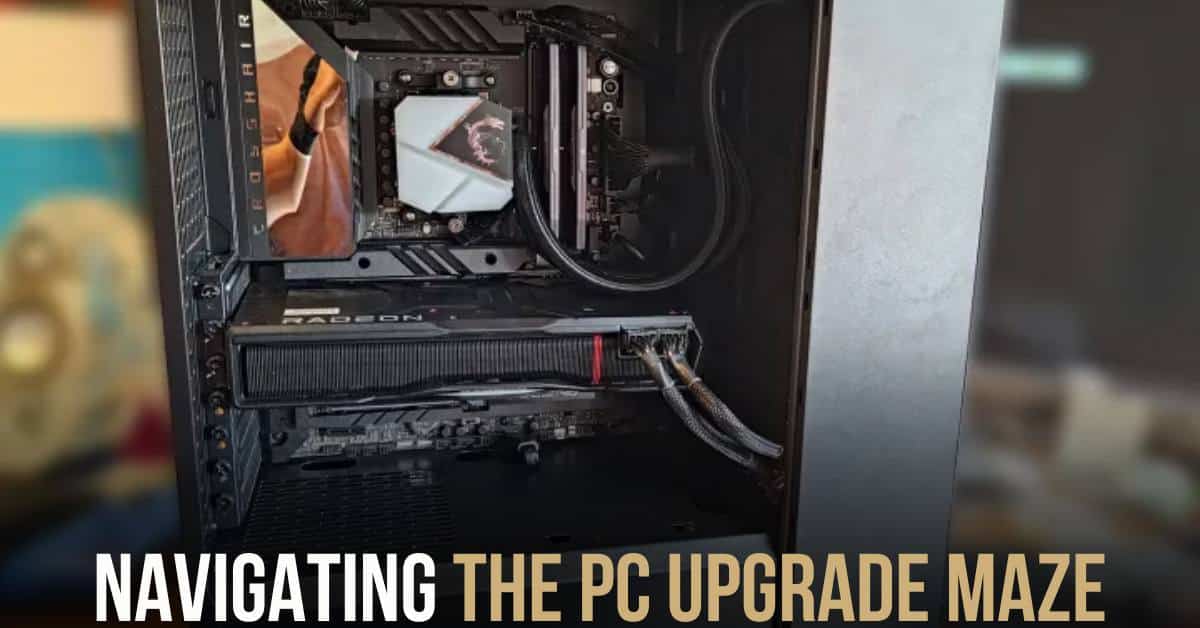Greetings, fellow PC enthusiasts! If you’re anything like me, the world of PC hardware is more than just a passion – it’s a lifelong love affair. For two decades, I’ve immersed myself in the intricate dance of research, building, tweaking, and writing about the ever-evolving realm of processors, graphics cards, and all things tech. But, my friends, even the most seasoned among us can occasionally stumble into the trap of FOMO (fear of missing out).
The Upgrade Journey Unveiled
In my home office, where work and play seamlessly blend, I recently embarked on a quest for an upgrade. My trusty old PC, a mishmash of upgrades over the years, was starting to show signs of wear and tear. The sluggishness, the occasional ping spikes – it was time for a fresh start.
A decade ago, a clean slate would have meant days of formatting, reinstalling, and meticulous data migration. But alas, times have changed. As a busy dad and tech journalist, efficiency took precedence. I opted for a new drive, repurposing the old one for games and apps – a move that’s become almost a ritual in my tech-driven life.
Building the Monstrous Beast
Amidst the clutter of retired test hardware, I saw an opportunity to create something truly monstrous. After much contemplation, I settled on a Ryzen 7950X3D, 32GB of DDR5, a 2TB Samsung 980 Pro, an Asus ROG Crosshair X670E motherboard, and an RX 7900 XTX. A beast on paper, a dream in the making.
And voila, the system emerged – a technological marvel, a powerhouse with endless potential for future upgrades. The excitement was palpable as I hit the power button, and my new rig roared to life. It booted faster, felt fresh, and promised a respite from years of software clutter.
You may be interested in our other articles about technology if you enjoyed this one:
- Windows 11 KB5031455 Update Woes: Installation Failures and Game Crashes
- How to Unlock UK Netflix with the Best VPN?
Reality Check: Gaming Unchanged
But here’s the twist – the gaming experience, the heart of the upgrade, remained surprisingly unaltered. Games like Hell Let Loose, NORCO, and Battle Brothers felt eerily similar. The frame rates might have nudged higher, but the impact was minimal. It begged the question – did I really need this level of hardware prowess for my gaming habits?
It’s All in the Cloud Anyway
As the disappointment of gaming’s status quo settled, a broader realization dawned. The modern tech landscape, dominated by cloud services and seamless integrations, meant that local hardware speed wasn’t as crucial as it once seemed. Google’s services, Steam’s cloud saves, and even resource-intensive applications like Photoshop embraced the cloud, diminishing the significance of local hardware speed.
My wife’s year-long gaming stint on a non-gaming laptop using GeForce Now highlighted that the cloud could bridge the gap without the need for a beastly local rig. The upgrade journey began to feel like a pursuit of excess in a world where much of the heavy lifting happens in the cloud.
A Lesson Learned: Upgrade with Purpose
As I reflect on this journey, I can’t help but acknowledge a valuable lesson. Upgrading a PC should have a purpose, a meaningful goal. Whether it’s unlocking a game you’ve been yearning to play, enhancing work productivity, or diving into competitive gaming – there must be a reason behind the upgrade.
Sure, the allure of having the fastest, most advanced PC is undeniable. Yet, it’s crucial to align these desires with practical needs. Time and money are precious, and investing in an upgrade without a clear purpose might lead to a lackluster realization that the pursuit of the latest and greatest doesn’t always translate into a transformative experience.
So, fellow enthusiasts, revel in the joy of PC exploration, but let your upgrades be guided by intention. Upgrade not just for the sake of it, but because it brings tangible value to your gaming, work, or overall computing experience. Your time and money deserve nothing less. Happy gaming, and may your PCs be as purposeful as they are powerful!



